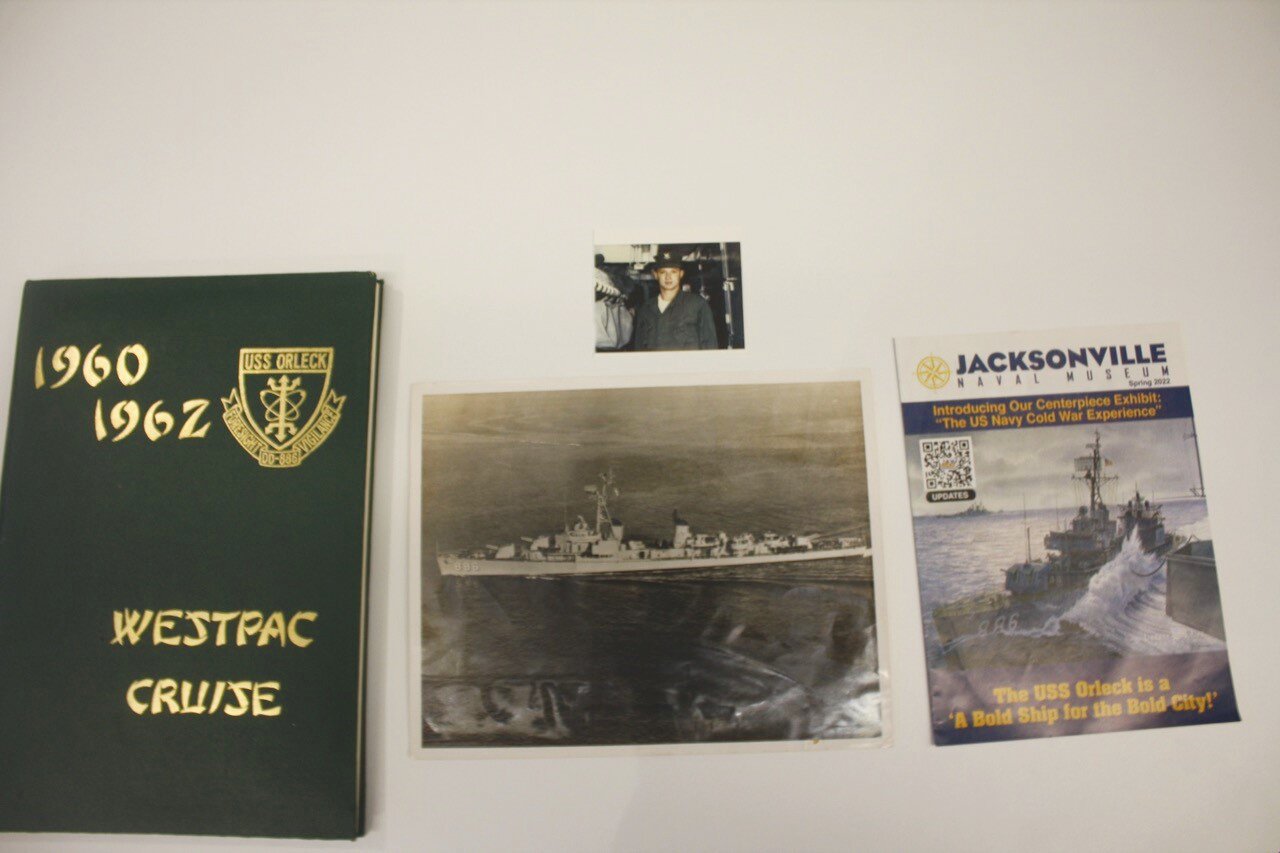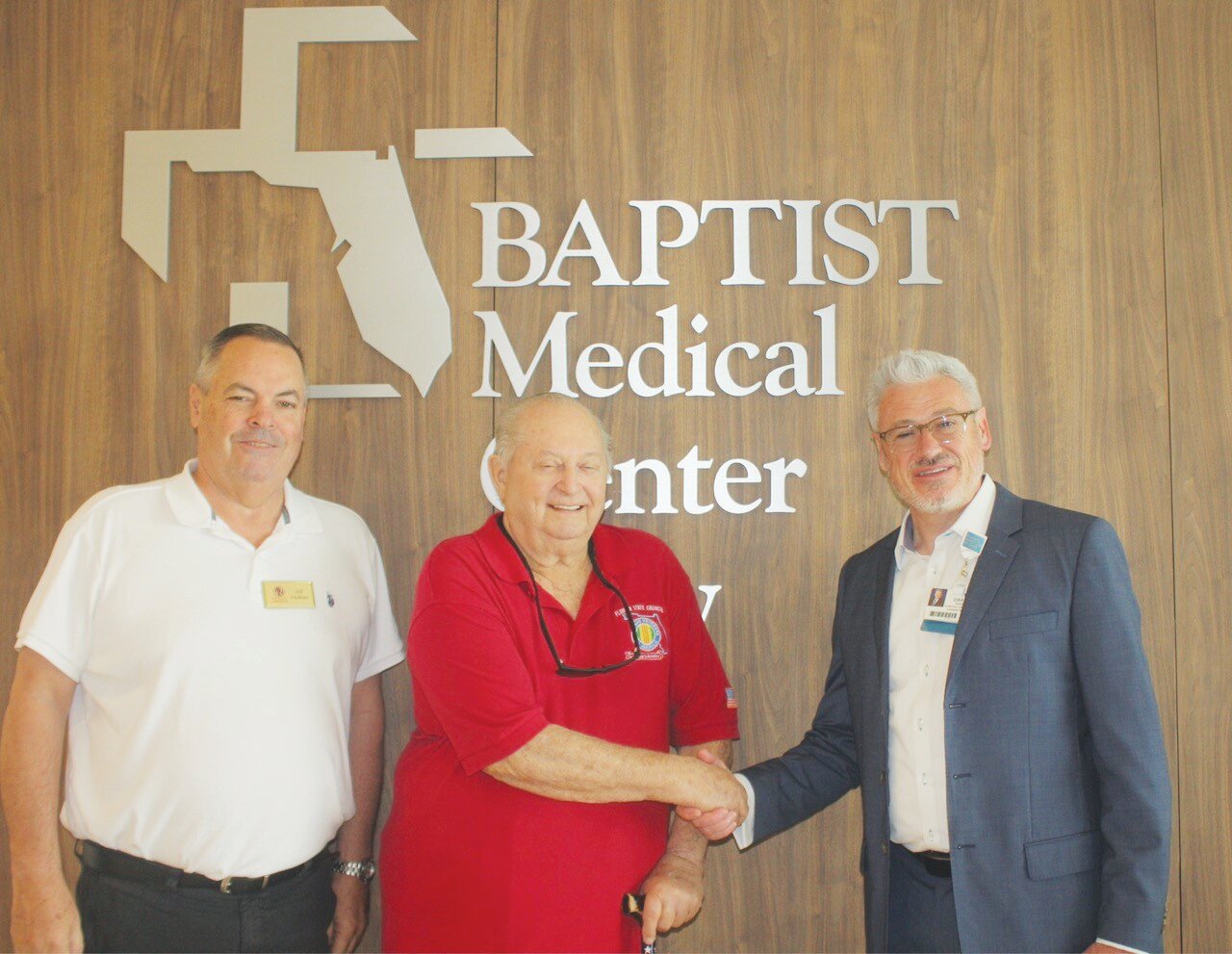Newman’s military legacy to be preserved on USS Orleck
Veteran’s story commemorated during ceremony at Baptist Clay
FLEMING ISLAND – Gary Newman was interviewed by the National Society of the Colonial Dames of America’s Florida Chapter about his life and career in the U.S. Navy for their Oral History Project …
This item is available in full to subscribers.
Attention subscribers
To continue reading, you will need to either log in to your subscriber account, below, or purchase a new subscription.
Please log in to continueDon't have an ID?Print subscribersIf you're a print subscriber, but do not yet have an online account, click here to create one. Non-subscribersClick here to see your options for subscribing. Single day passYou also have the option of purchasing 24 hours of access, for $1.00. Click here to purchase a single day pass. |
Newman’s military legacy to be preserved on USS Orleck
Veteran’s story commemorated during ceremony at Baptist Clay
FLEMING ISLAND – Gary Newman was interviewed by the National Society of the Colonial Dames of America’s Florida Chapter about his life and career in the U.S. Navy for their Oral History Project of the USS Orleck at the Clay Baptist Medical Center on Thursday.
Newman’s history will be forever engraved at USS Orleck through the project, and the Colonial Dames will also submit his history to the Library of Congress. His oral history is at the Library of Congress, but the Colonial Dames will submit another copy to preserve his story.
Before his time in the Navy, Newman told a tale of a hard-knock childhood, where he saw a strict upbringing as a foster child in the Detroit area.
Born in Centerline, Michigan, he was abandoned as a child. Free labor in exchange for room and board was a common practice for children during the time. By the time he was 7, he and his brother drove a tractor and plowing fields, he said.
Newman did this while living in orphanages, or with his brothers and sisters.
His father reclaimed him, spending two months with him before putting a $10 bill in his pocket and sending him on a train from Michigan to California to visit his grandmother. A few years later, his mother reentered his life with a new husband, who was a Marine.
Newman lived in Orlando with his mother and stepfather, but when his mother’s new husband shifted from the Marines to the Air Force, the move would significantly impact the outlook for the entire family. They made a 4,590-mile drive to Eielson Air Force Base at Fairbanks, Alaska.
This is where Newman would stay until he would end up at a crossroads. He recounted getting into legal trouble, with a judge giving him two options: either joining the military or being sent to a Seattle detention home.
He was sworn into the military at Kodiak Naval Station at age 17.
Newman felt joining the Navy was a perfect fit during boot camp.
“I realized at the time that there was no way I was getting out of the military. The military was my parents. They took care of me and told me what I needed to do. This was the right thing for my life. I was kind of wild and had no disciplinary training, no one had watched my movements. I wanted to go see the world,” he said.
Throughout a legendary 20-year Naval career, Newman learned valuable skills, had life experiences, and was involved in an international incident. He served his first 12 years as a torpedo man until 1973, when he changed his career field to become a Master-At-Arms. He also served on the Armed Forces Police in Brooklyn and Maddalena, Sardinia.
Newman’s first mission was aboard the USS Ammen (DD-527) from June 1959 to Aug. 1960. He transferred to the USS Shelton (DD-790), where he was from Aug. 1960-March 1962. Newman forged strong bonds with fellow sailors and immersed himself in local Japanese culture.
Newman stayed on the USS Orleck (DD-886) from March to November 1964, where he traveled the world, forged tight-knit bonds with fellow sailors, experienced new cultures, and met seaman from other countries. Newman survived a typhoon at sea, the ocean rocking the Orleck so violently that he could walk on the walls of the vessel.
While aboard the USS Maddox (DD-731) in August 1964, Newman was involved in the Gulf of Tonkin, an international incident where torpedoes from North Vietnamese forces attacked his and another ship.
Newman said he witnessed the boats coming in. After the first incident, his boat needed refurbishments and soldiers to collect food and ammunition. Enemy submarines were believed to be active again two days later, but no official sightings were confirmed.
However, enough was enough. On Aug. 7, 1964, Congress passed the Gulf of Tonkin Resolution, which authorized President Lyndon B. Johnson to take any measure necessary to retaliate and promote international peace and security in southeast Asia, a legal basis for Johnson and President Richard Nixon for the Vietnam War.
Newman served two tours in Vietnam, where he was the only torpedo man to serve on riverboats. He retired in March 1978 as a Master-at-Arms Chief Petty Officer. He was immediately hired as Clay County Deputy Sherriff, then served as Deputy Director of Security at NAS Jacksonville. Newman retired from civil service in 2007.
Newman is also a passionate advocate for veterans and a highly decorated soldier. He has spent countless hours mentoring fellow soldiers. He founded the Vietnam Veterans of America Chapter 1059 in Clay County in 2012 and the Veterans Interaction Program at Union Correctional Facility in 2013. And he helped organize the Clay County Veterans Council in 2014.
He was awarded the Navy Achievement Medal with combat “V” attachment, the Presidential Unit Citation, and two Navy Meritorious Unit Commendations, among other achievements. Now, his history will now be forever preserved in the Orleck.













